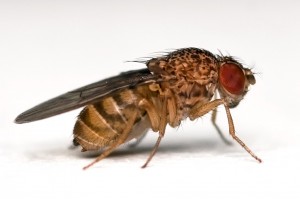MONDAY, 5 NOVEMBER 2012
Reenan and colleges hypothesised that modification of the fly counterpart would allow for closer investigation of the mechanisms underlying temperature-dependent epileptic seizures and indeed their fly model has kept its promise.
The genetic engineering approach is termed ‘ends-out homologous recombination’ and uses a specifically designed mobile DNA fragment (P-element) that can precisely deliver a mutant version of the para-gene to the position of the normal fly gene; replacing the existing one. “This is the first time anyone has introduced a human disease-causing mutation overtly into the same gene that flies possess” says co-corresponding author Robert Reenan.
When exposed to temperatures above 30°C, flies with the normal gene do not show altered behaviour while flies with the mutant para-gene enter a seizure-like state marked by leg twitching and the inability to remain standing in a light air current. Closer investigation of sodium currents by lead author Lei Sun and colleagues revealed that the mutant sodium channels pass too much current across the cell membrane at elevated temperatures. As a result the electrical activity of the neuron is perturbed, the cells fail to exert their regulatory function and seizure-inducing brain over-activity ensues.
The fly geneticists now aim to investigate whether secondary mutations in other fly genes can counteract the effects of the sodium-channel mutation. The researchers expect that identification of such ‘suppressor mutations’ will one day guide the development of novel therapeutics.
doi:10.1523/JNEUROSCI.2932-12.2012
Written by Nele Dieckmann

